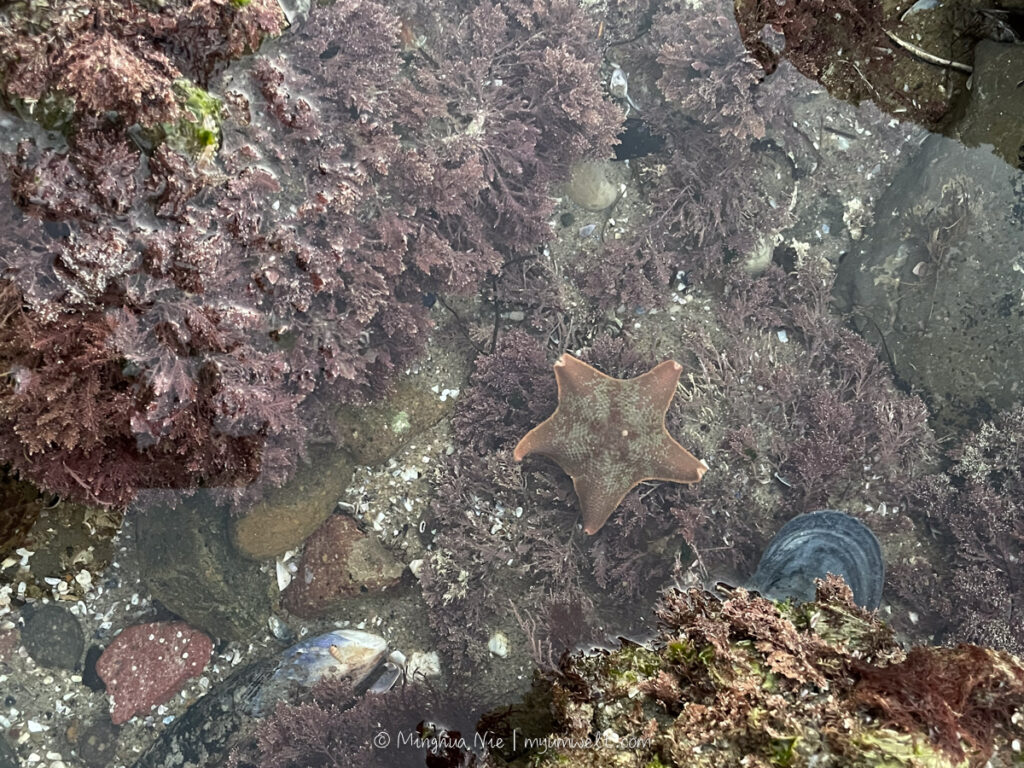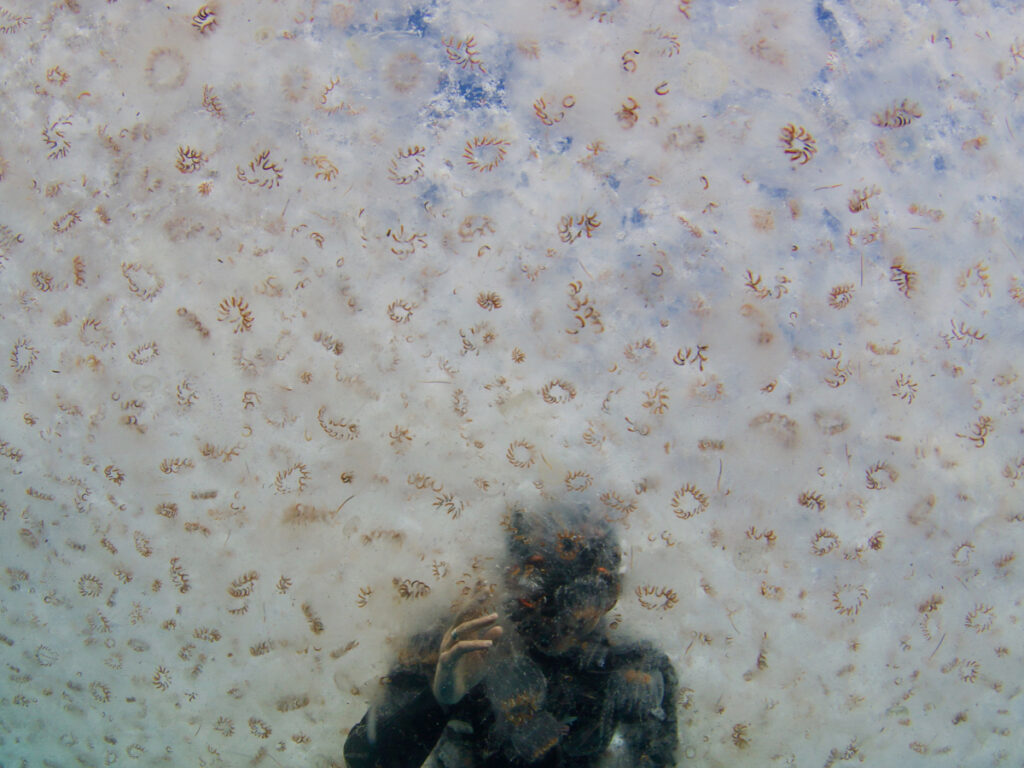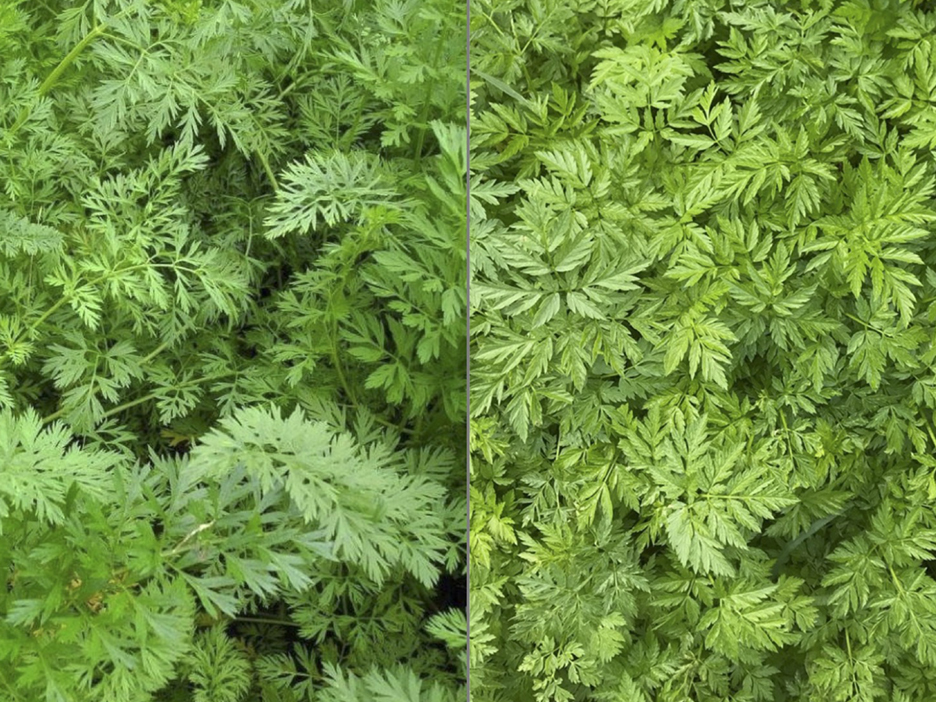
I still remember clearly one crisp sunny morning in a February. Strolling around La Jolla Cove—an iconic part of San Diego—where tourists watch the sea lions and vice versa, I glanced down at the crescent sandy beach that reached into gentle translucent emerald ripples: a few swimmers were wading in. I knew the water was cold; I could feel the chill through my winter coat. A woman in the group stood out. Only equipped with swimsuit and cap, she calmly adjusted her goggles, lingered for a minute or two in the waist deep water, then off she went, blending in with the waves. What makes one embrace the painful cold with grace? I wondered. The year was 2018.
At that time, swimming off La Jolla coast had just started to trickle into my life. Although in the winter months I habitually retreated to the land, back to running, hiking, or swimming in a pool.
A shift occurred in Fall, 2019. After discovering a group called First Light Swimmers, my ocean swimming suddenly took off. I showed up religiously every Wednesday and Friday, before 6:30 am, to join the group swim.
As the winter approached, the water temperature plummeted, the mornings became the nautical dawn.
Human perceptions of cold are intricate, complex, and sometimes even self-contradicting. Of somatosensory modalities, or bodily perceptions, cold is one of the most ambiguous. When skin senses temperature below 90 F, cold thermoreceptors trigger ever increasing firing of nerve fibers. Below 59 F, cold nociceptors awaken to evoke painful sensations. As warm-blooded mammals, humans have evolved to avoid cold. Losing body temperature (25 times faster in water than in air) could be lethal. Cold is not to be ignored. It commends our full attention, by inducing pain.
Human perceptions of cold are intricate, complex, and sometimes even self-contradicting.
As the water dropped below 59 F, I still resisted putting on a wetsuit, wondering how far I could push into the cold: my skin against the biting chill. Back then, winter skinning at La Jolla coast was rare. There might have been a sense of pride in braving the cold. But in truth, it was the curiosity that nudged me on. Being a research scientist, I am always methodical. I delved into literatures on physiological responses to cold. My habituation was gradual, unrushed. The water temperatures measured by the NOAA buoys, reads on my Suunto watch, my responses during the swim and recovery recorded afterward: all carefully compared and monitored.
With habituation, the gasping cold shock response 1 diminished. The stinging needles remained at first. But my experience assured me they would quiet, be tamed. After a few minutes, I started to feel an equilibrium with the ocean temperature: the water and I, a continuum.
Beneath skin deep perceptions, cold-water exposure unleashes a cascade of physiological responses to protect the core body temperature. Blood vessels under the skin constrict to reduce heat loss. Metabolism in muscle and fat elevate to produce heat. Cytokines, norepinephrine, insulin, zinc levels change, all imperceptibly. A survey 2 of 104 published studies on cold water swimming has found increasing scientific support of potential protective health effects.
Although it must be gratifying to see reported benefits of trading hedon for health, the true magnetism of the winter ocean is an unanticipated wealth of experiences—impossible to attain in a perfectly controlled aquatic environment. Deeper into winter, nautical dawn sinks into almost complete darkness. Leaving streetlights behind, sparks of bioluminescence come to life with the stir of my fingertips, and each stroke ignites a plume of pale neon fire—magic on command. On some winter days, as the daylight breaks, endless sea birds flock over my head, rushing towards their breakfast buffet. And once, I encountered a raft of hundreds of sea lions, dancing, frolicking, turning the ocean into a bubbly, joyful fizz.
Interrupted briefly by the early-pandemic beach closures in March 2020, over the past four years I have logged hundreds of hours of cold weather swims. The pandemic seemed to have an acceleration effect on ocean swimming. The First Light Swimmers and other swim groups organically coalesced and grew into a 2800-member San Diego Open Water Swimming group*.
I see more people opting out wetsuits for that more direct connection with their sensory feedback of the environment. Tom Mulligan, a First Light swimmer who was fully suited in 2020, completely transitioned out of wetsuits in 2021. Without it, he discovered the surprise benefits of the greater sense of connection with both the water and his own body. To him, now, putting on a wetsuit becomes a “mental pain.”
“Icy hot, core warming, a warm blanket”—words of warmth were used to describe a cold swim: An odd juxtaposition!
On a swim in late February, none of the five women in my pod sought the neoprene. After the swim, we sat at a bistro, chasing away our shivers with hot drinks. I asked around the table how they experienced the cold water. “Icy hot” (Rachel), “core warming” (Sussi), and a “warm blanket” (Zana) were their responses. Words of warmth to describe a cold swim: An odd juxtaposition, considering that mere moments ago, we were all struggling to change into our dry clothes, fingers numbed by the vasoconstriction from extended cold immersion. That morning, the water temperature had measured 53 F, a new low for the season.
Still, to gain a greater sense of connection, one must reach beyond the high threshold put up by our most unwanted sensation: pain. My relationship with that feeling changed a year ago with the realization that above the threshold of hypothermia, cold is just another sensation of the perception family. Once assured that the pain from cold in this temperature range poses no danger, it no longer calls for fear. When the sensation of cold can be separated from the pain and fear it induces, it becomes far more interesting to explore.
Swimming off the California coast in the winter is like treading in the intertidal zone of the senses: Participants are constantly checking their perceptions of their experiences against the reality of the conditions. Leaving behind the land, its comfort and warmth, you enter a world of rich new senses.
References:
- Eglin, Clare M, et al. “Rapid Habituation of the Cold Shock Response.” Extreme Physiology & Medicine, vol. 4, no. S1, 14 Sept. 2015, https://doi.org/10.1186/2046-7648-4-s1-a38.
- Espeland, Didrik, et al. “Health Effects of Voluntary Exposure to Cold Water – a Continuing Subject of Debate.” International Journal of Circumpolar Health, vol. 81, no. 1, 22 Sept. 2022, https://doi.org/10.1080/22423982.2022.2111789.
Notes:
* The essay was initially written in March 2023. Since then, the San Diego Water Swimming Facebook group has grown to over 3300 members.





You are brave! I prefer wetsuit 🙂
Thank you Ron! You should try it this winter.